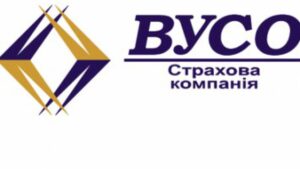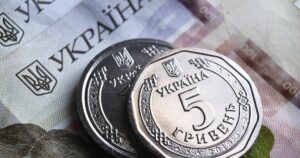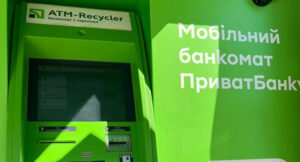
PJSC Insurance Company VUSO (Kyiv) has collected UAH 2,494 billion of gross premiums in January-September 2024, that is by 24,4% more than in the same period of 2023, RA “Standard-Rating” informed in the information on confirmation of the company’s financial strength rating at the level of “uaAA” according to the national scale. According to the data on the website of the rating agency, receipts from individuals of the insurer for the specified period have increased by 13,01% – up to UAH 1,454 billion, from reinsurers – by 64,93%, up to UAH 37,018 mln. Thus, the share of individuals in gross premiums amounted to 58,29%, reinsurers – 1,48%.
Insurance payments sent to reinsurers for the first nine months of 2024 increased by 77,81% – up to UAH 282,831 mln. Thus, the ratio of reinsurers’ participation in insurance premiums has increased by 3,41 p.p. – up to 11,34%.
Net premiums collected by IC “VUSO” have grown by 19,78% – to UAH 2,211 bln, net earned premiums – by 18,98% – to UAH 2,014 bln.
IC “VUSO” for January-September 2024 paid out UAH 1,038 billion to clients, that is by 52,70% higher than the volume of insurance payouts for the same period of 2023. Thus, the level of payouts has increased by 7,72 p.p. – up to 41.63%.
RA also notes that following the results of three quarters of 2024 the financial results of the insurer have significantly improved: the profit from operating activities has grown in 22,6 times – up to UAH 183,760 mln, net profit – in 5,5 times, up to UAH 93,974 mln.
Assets of the company as of October 1, 2024 grew by 15.42% – to UAH 1.759 billion, shareholders’ equity – by 19.14% – to UAH 735.377 million, liabilities – by 12.89% – to UAH 1.024 billion, cash and cash equivalents – by 21.31% – to UAH 676.311 million.
According to RA data, as of the mentioned date the company has formed a portfolio of investments in government bonds in the amount of UAH 228,779 mln, which increased the level of security with liquid assets, which in aggregate covered 88,38% of its liabilities. Besides, the balance of funds in the centralized insurance reserve funds (IARF) of the insurer has amounted to UAH 344,624 m, that also positively influenced its liquidity.
IC “VUSO” was founded in 2001. It holds 50 licenses: 34 – for voluntary and 16 – for compulsory types of insurance, is represented in all regions of Ukraine. It is a member of the Motor (Transport) Insurance Bureau of Ukraine (MTSBU) and the Ukrainian Insurance Federation (UIF), as well as a participant of the Agreement on direct settlement of losses and a member of the Nuclear Insurance Pool.

Ukraine’s real gross domestic product (GDP) grew by 2% in the third quarter of 2024 compared to the third quarter of 2023, according to preliminary data from the State Statistics Service (Ukrstat). According to the statistics agency, seasonally adjusted real GDP increased by 0.2% in the period under review compared to the previous quarter.
As reported, in late October, the National Bank of Ukraine raised its economic growth forecast for 2024 from 3.7% to 4%, and for 2025 from 4.1% to 4.3%. At the same time, the NBU downgraded its inflation forecast for 2024 from 8.5% to 9.7%, and for 2025 from 6.6% to 6.9%.
The Ministry of Economy expects Ukraine’s GDP to grow by 3.9% in 2024, with inflation at 9.5%. According to the State Statistics Service, Ukraine’s GDP grew by 5.3% in 2023 after a 28.8% decline in 2022.
In the first quarter of 2024, real GDP grew by 6.5%, and in the second quarter – by 3.7%.

Telegram’s revenue in 2024 amounted to more than $1 billion, the messenger’s founder Pavel Durov said.
“2024 was a very successful year for Telegram. For the first time in 3 years of its monetization, Telegram has become profitable,” Durov wrote on his Telegram channel.
According to him, the company’s cash reserves at the end of 2024 amounted to more than $500 million, excluding crypto assets.
The number of Telegram Premium subscribers tripled in 2024, exceeding 12 million, and advertising revenues “increased several times.”
Durov also said that over the past four years, Telegram has placed debt obligations worth about $2 billion, a significant portion of which was repaid in the fall of 2024.

Last week, the National Bank of Ukraine’s (NBU) interventions in the interbank market jumped to a record high for this year and last year – $1 billion 417.4 million, the second highest figure since Russia’s full-scale invasion of Ukraine after $1 billion 424.1 million in May 2022, according to the regulator’s statistics.
According to the statistics, the central bank increased sales of foreign currency by 31.8% compared to the previous week, to $1 billion 417.6 million. At the same time, purchases remained at a meager level, but doubled over the week to $0.2 million.
In total, since the beginning of 2024, the volume of foreign currency sold by the regulator amounted to $32 billion 942.6 million, while the volume of foreign currency purchased amounted to $126 million. Over the same period in 2023, the NBU sold $27 billion 937.1 million worth of foreign currency and bought back $218.9 million.
According to the data published by the central bank during this time, the negative balance between the volume of foreign currency purchases by the population and the volume of its sales narrowed from $50.92 million to $48.52 million.
The official hryvnia exchange rate dropped by 27 kopecks to 41.8761 UAH/$1 over the week, while the cash exchange rate weakened by 32 kopecks when buying to 42.25 UAH/$1 and by 37 kopecks when selling to 42.33 UAH/$1.
Over the past month, the official hryvnia exchange rate fell by 0.9%, or 37 kopecks.
In general, since the beginning of 2024, the dollar has risen in price by 10.2%, or UAH 3.87, at the official exchange rate, and since the National Bank switched to managed flexibility on October 3, 2023, by 14.5%, or UAH 5.30.
As reported, Ukraine’s international reserves in November 2024 increased by $3.344 billion, or 9.1%, and as of December 1, according to preliminary data from the central bank, amounted to $39.925 billion, while net international reserves (NIR) increased by $3.5 billion, or 15.6%, to $25 billion 939 million.

State-owned PrivatBank (Kyiv) is launching a round-the-clock currency exchange service through specialized ATMs called ATM-Recycler, with a limit of up to $1,000 or euros per transaction, with no commission for the service, according to a press release from the state bank on Monday.
It is noted that transactions are carried out at PrivatBank’s cash exchange rate for foreign currency. The balance of the transaction less than UAH 100 is credited to the client’s card or mobile account.
According to the bank’s press service, Privat’s ATM network currently consists of 65,000 devices, including 1.29 thousand ATM-Recycler machines that allow changing foreign currency.
According to the National Bank of Ukraine, as of November 1, 2024, PrivatBank ranked 1st in terms of total assets (UAH 767.64 billion) among 62 banks operating in the country. The financial institution’s net profit for the first ten months of 2024 amounted to UAH 50.26 billion, while in the same period of 2023 it amounted to UAH 47.10 billion.

Donald Trump has said that the United States absolutely needs to establish control over Greenland. He already wanted to buy the island during his first presidential term. He wrote about it on the social network Truth Social.
“For the purpose of national security and freedom around the world, the United States of America believes that possession and control of Greenland is an absolute necessity,” he wrote.
The publication reminds that the United States has repeatedly tried to buy Greenland, the world’s largest island that is not a continent, since 1867. Greenland is considered part of the continent of North America, but has close geopolitical ties with Europe and receives funding from the European Union, as it is classified as an overseas territory connected to the bloc through Denmark.
Greenland’s natural resources include gold, silver, copper, and uranium, and the waters off the coast are believed to contain significant oil reserves.
Trump put forward the idea of the US buying Greenland in 2019 during his first presidential term. At the time, Danish Prime Minister Mette Frederiksen rejected the proposal, calling it “absurd.” After that, Trump canceled his trip to Denmark.